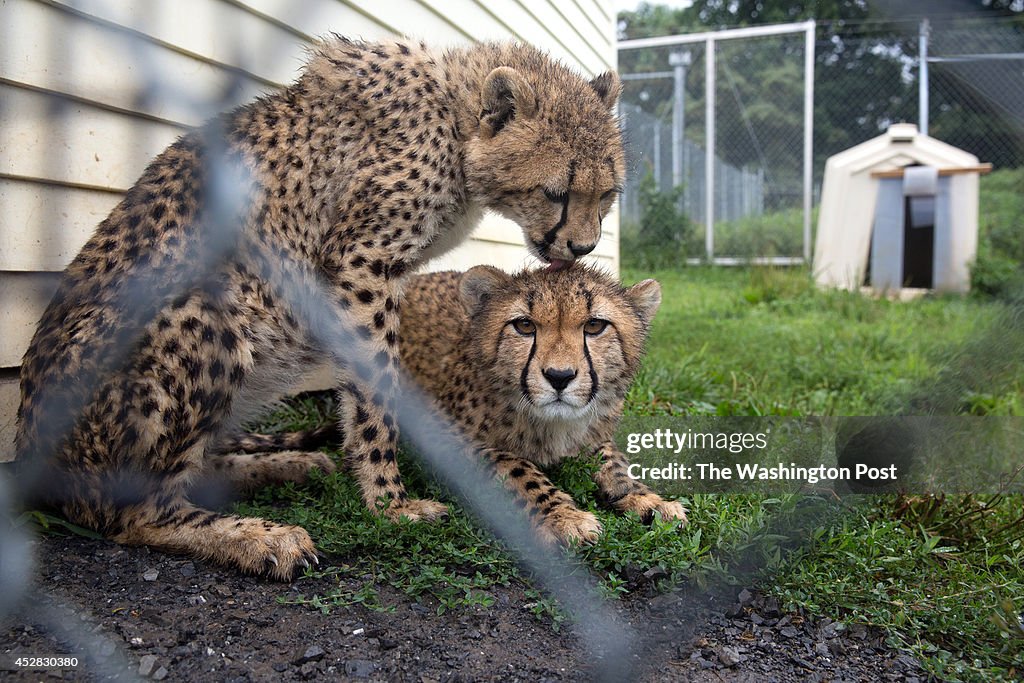Smithsonian Conservation Biology Institute helps diversify the zoo gene pool and breed endangered species
FRONT ROYAL, VA - JUL24: Cheetah cubs born at the Cheetah Science Facility at the Smithsonian Conservation Biology Institute in Front Royal, Virginia, July 24, 2014. A high priority is maintaining and increasing genetic diversity in small populations to avoid inbreeding, which causes poor fertility and increased disease susceptibility. Scientists work closely with zoos worldwide to develop assisted reproduction techniques, including artificial insemination, in vitro fertilization, embryo transfer and cryopreservation (freezing) of sperm and embryos. (Photo by Evelyn Hockstein/For The Washington Post via Getty Images)

ACHETER UNE LICENCE
Comment puis-je utiliser cette image ?
475,00 €
EUR
INFORMATIONS
Restrictions :
Contactez votre agence locale pour toute utilisation commerciale ou promotionnelle.No political advertising; No commercial use by customers in government or political industry.
Crédits :
Editorial - n° :
452830380
Collection :
The Washington Post
Date de création :
24 juillet 2014
Date de chargement :
Type de licence :
Infos autorisations :
Autorisation non disponible. Plus d'infos
Source :
The Washington Post
Référence :
ZOOGENES